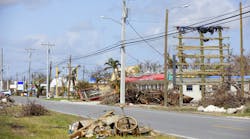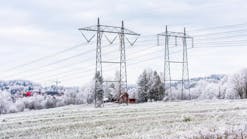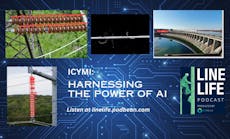Floridians will be better prepared for weather hurricanes and other extreme storms thanks to new legislation signed by Governor Ron DeSantis.
Senate Bill 796 (SB 796) addresses one of the most critical issues vexing utilities across America — how to make the power grid more resilient against destructive natural disasters. Whether facing wildfires, floods, tornadoes, nor’easters, polar vortices, or hurricanes, utilities in every corner of the United States are working to find solutions to protect consumers from power outages.
Last year, the National Oceanographic and Atmospheric Administration (NOAA) reported extreme weather cost — a record US$300 billion in damages in 2017. On top of property damage and threat to life posed by storms, the power outages they cause also take a toll on our economy. Every day the lights are out, the costs of disasters rise dramatically. In the case of Florida, 2017’s hurricane Irma caused US$51 billion in damage and left the lights out for nearly two weeks. If just one-third of Florida lost power for a day, the loss of economic productivity would be US$1 billion.
These very real costs mean fewer jobs, especially for hourly and seasonal employees, steep losses for small businesses, and higher expenses for families trying to get back to normal.
Florida lawmakers saw these costs first-hand in their communities after suffering three consecutive years of devastating hurricanes, Matthew, Irma, and Michael. Their unique and bipartisan approach to resiliency recognizes the need for proactive action that protects Floridians’ power supply and their pocketbooks.
SB 796 allows utilities to make the long-term up-front investment needed in storm hardening to reduce or withstand power failures after a hurricane. Specifically, the law allows utilities to assess a monthly storm hardening fee to fund 10-year hardening plans composed of a variety of improvements such as targeted undergrounding, vegetation management, and installing stronger poles and wires. Hardening plans will be subject to approval by the state public service commission (PSC). The PSC will also annually review hardening costs to maintain strong consumer protections.
Hardening the grid is the most effective way to improve its resilience. The U.S. Energy Information Administration (EIA) specified that power was restored twice as quickly after hurricane Irma as 2005’s hurricane Wilma, despite Wilma causing twice as many outages. Florida Power & Light (FPL) restored 50% of its customer outages one day after Irma hit; it had taken them 5 days to do so after hurricane Wilma. Using smart grid technology, Duke Energy Florida (DEF) saved 3.1 million customer minutes from outages in the 2016 hurricane season.
As the Florida data shows, by making prudent investments on the front end, consumers will save money in the long run, owing to shorter outage times, or even fewer outages overall. The cost of not investing in hardening can be quite high. Many in Florida’s Panhandle will be paying a US$8 per month recovery fee for the next five years to repair the grid in the wake of hurricane Michael, for example.
As the cost of natural disasters and our reliance on affordable and reliable power increase, so too will the need for more resilient electric grids. Florida leaders implemented a smart, proactive approach that states across the country can look to as an example as they consider ways to protect their power and their consumers after disaster strikes.


